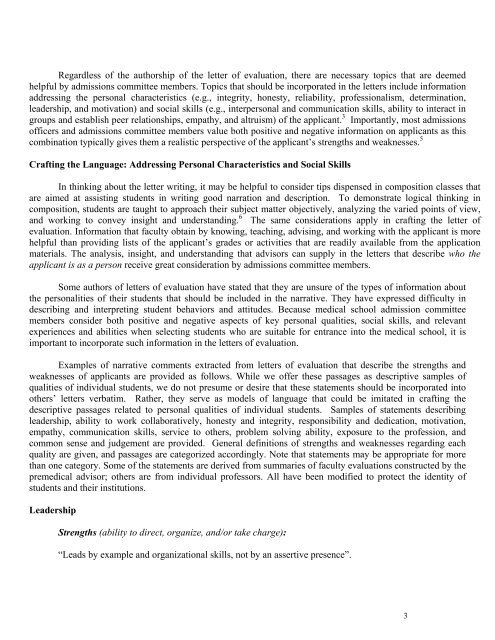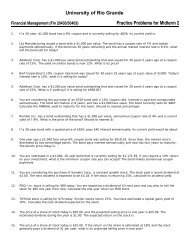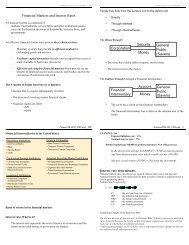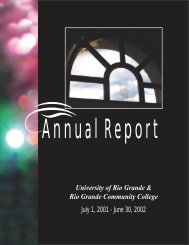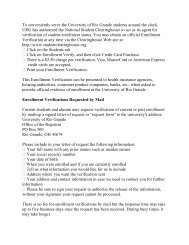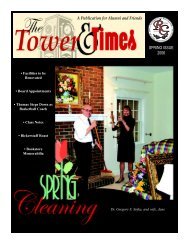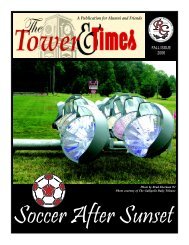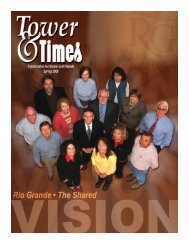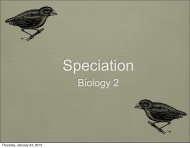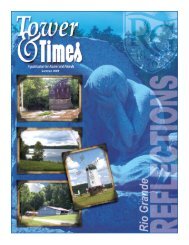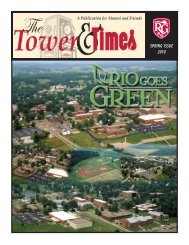Composing a Letter of Evaluation that Captures The - Pre-Medical ...
Composing a Letter of Evaluation that Captures The - Pre-Medical ...
Composing a Letter of Evaluation that Captures The - Pre-Medical ...
Create successful ePaper yourself
Turn your PDF publications into a flip-book with our unique Google optimized e-Paper software.
Regardless <strong>of</strong> the authorship <strong>of</strong> the letter <strong>of</strong> evaluation, there are necessary topics <strong>that</strong> are deemed<br />
helpful by admissions committee members. Topics <strong>that</strong> should be incorporated in the letters include information<br />
addressing the personal characteristics (e.g., integrity, honesty, reliability, pr<strong>of</strong>essionalism, determination,<br />
leadership, and motivation) and social skills (e.g., interpersonal and communication skills, ability to interact in<br />
groups and establish peer relationships, empathy, and altruism) <strong>of</strong> the applicant. 3 Importantly, most admissions<br />
<strong>of</strong>ficers and admissions committee members value both positive and negative information on applicants as this<br />
combination typically gives them a realistic perspective <strong>of</strong> the applicant’s strengths and weaknesses. 5<br />
Crafting the Language: Addressing Personal Characteristics and Social Skills<br />
In thinking about the letter writing, it may be helpful to consider tips dispensed in composition classes <strong>that</strong><br />
are aimed at assisting students in writing good narration and description. To demonstrate logical thinking in<br />
composition, students are taught to approach their subject matter objectively, analyzing the varied points <strong>of</strong> view,<br />
and working to convey insight and understanding. 6 <strong>The</strong> same considerations apply in crafting the letter <strong>of</strong><br />
evaluation. Information <strong>that</strong> faculty obtain by knowing, teaching, advising, and working with the applicant is more<br />
helpful than providing lists <strong>of</strong> the applicant’s grades or activities <strong>that</strong> are readily available from the application<br />
materials. <strong>The</strong> analysis, insight, and understanding <strong>that</strong> advisors can supply in the letters <strong>that</strong> describe who the<br />
applicant is as a person receive great consideration by admissions committee members.<br />
Some authors <strong>of</strong> letters <strong>of</strong> evaluation have stated <strong>that</strong> they are unsure <strong>of</strong> the types <strong>of</strong> information about<br />
the personalities <strong>of</strong> their students <strong>that</strong> should be included in the narrative. <strong>The</strong>y have expressed difficulty in<br />
describing and interpreting student behaviors and attitudes. Because medical school admission committee<br />
members consider both positive and negative aspects <strong>of</strong> key personal qualities, social skills, and relevant<br />
experiences and abilities when selecting students who are suitable for entrance into the medical school, it is<br />
important to incorporate such information in the letters <strong>of</strong> evaluation.<br />
Examples <strong>of</strong> narrative comments extracted from letters <strong>of</strong> evaluation <strong>that</strong> describe the strengths and<br />
weaknesses <strong>of</strong> applicants are provided as follows. While we <strong>of</strong>fer these passages as descriptive samples <strong>of</strong><br />
qualities <strong>of</strong> individual students, we do not presume or desire <strong>that</strong> these statements should be incorporated into<br />
others’ letters verbatim. Rather, they serve as models <strong>of</strong> language <strong>that</strong> could be imitated in crafting the<br />
descriptive passages related to personal qualities <strong>of</strong> individual students. Samples <strong>of</strong> statements describing<br />
leadership, ability to work collaboratively, honesty and integrity, responsibility and dedication, motivation,<br />
empathy, communication skills, service to others, problem solving ability, exposure to the pr<strong>of</strong>ession, and<br />
common sense and judgement are provided. General definitions <strong>of</strong> strengths and weaknesses regarding each<br />
quality are given, and passages are categorized accordingly. Note <strong>that</strong> statements may be appropriate for more<br />
than one category. Some <strong>of</strong> the statements are derived from summaries <strong>of</strong> faculty evaluations constructed by the<br />
premedical advisor; others are from individual pr<strong>of</strong>essors. All have been modified to protect the identity <strong>of</strong><br />
students and their institutions.<br />
Leadership<br />
Strengths (ability to direct, organize, and/or take charge):<br />
“Leads by example and organizational skills, not by an assertive presence”.<br />
3


